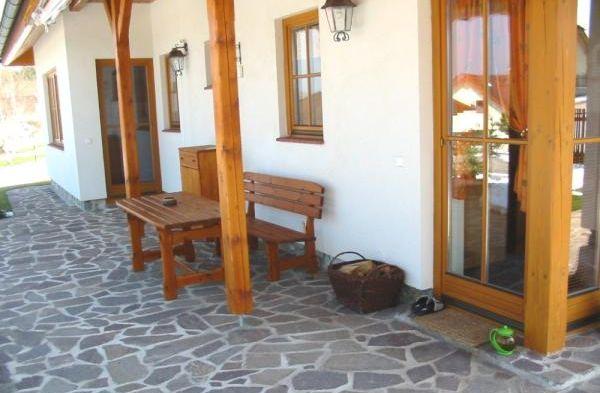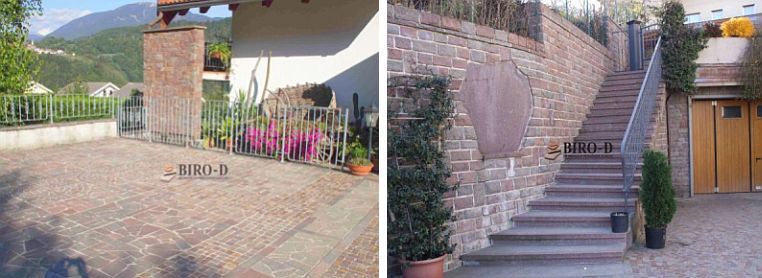Beauty of natural stone rediscovered

Regardless of time, natural stone retains its beauty. Besides, it simply endures hard conditions of the exterior of our gardens, terraces, ornamental walls as well as driveways and other highly stressed areas. Stone resists all external influences and still brings an unmistakable charm.
The right choice
At the beginning, it depends on our idea and also on the fact that the choice fits into the overall concept of the garden. We can choose either from irregular and regular stone shapes, or ornamental boulders (20-40 cm) for decorative purposes, or from special solitaires.
In the menu, several kinds of stone can be found in different colour shades. Our choice will depend on the application of the stone. Some types are used for ordinary tiles, others for hard conditions of driveways.
In the category of paving, there are two basic terms: light paving, which refers to components suitable for light loads, walking areas, terraces, sidewalks, pergolas, tiling around swimming pools etc. On the contrary, heavy paving is suitable for driving areas, driveways, garage entrances and the like.


A varied menu
- In the category of stones with irregular shapes, we can choose a red-rusty porphyry, which is very popular in our country due to its interesting colourful structure. It is used as tiling as well as light and heavy paving. It only depends on the selected thickness, which ranges from 1 to 7 cm.
- Andesite with a thickness of 1 to 4 cm brings a grey-black colour to the garden. It is used for any paving and tiling and is also suitable for the needs of smaller tiling.
- Yellow-brown sandstone with a thickness of 2 to 3 cm is also used for light paving and tiling. Units of 1 to 3 cm are used for small tiling.
- Shades of white and beige are offered by limestone with a thickness from 0.7 cm up to 3 cm for tiling and paving.
- Regular stones are also used very often, because the regularity of the format facilitates the laying of stones. Porphyry stone in this category offers shades of red-rusty and grey-red. The rock can be used for external and internal paving. It is delivered on pallets of 15 m2, in terms of width from 10 to 30 cm, in terms of thickness from 2.5 to 5.5 cm.
- Chipped edging blocks made of porphyry are often used to trim paving or create perimeter lines of pavements, paving and others. The format of chipped cubes is also available in sandstone, white marble and porphyry.
- Supporting walls made of chipped porphyry bricks are the third variant of using the stone, this time as a masonry one.


How does the installation work?
We choose the technological procedure according to the base on which we lay the paving. If we have an existing concrete base that we do not want to remove, we have to check its strength, integrity and absence of cracks. This base has to be cleaned and degreased.
If the installation is carried out without a concrete base, we have to dig the soil in the required area to a non-freezing depth. This is followed by the introduction of gravel or rubble and compaction of the layer.
In the next step, which may be common to both variants, we choose the thickness of the next concrete layer. This depends on the surface load and the thickness of the existing layer. For walking surfaces, the total thickness of the concrete layer will be from 8 to 10 cm, for driving areas from 15 to 20 cm. It is recommended to reinforce the concrete with welded wire mesh.
Then a layer of special mortar is applied in a thickness of 2 to 5 cm. We apply only such a layer on which we can lay the washed stone. Laying mosaics also requires tapping with a rubber maul into the concrete. If necessary, the stone can be adjusted with a mason’s hammer or an angle grinder with a diamond blade.




Source: www.ceskestavby.cz
